S7K Stand Alone Putter Review: Is It Legal?
The S7K Stand Alone Putter: A Comprehensive Review
It’s not sorcery; it’s the S7K Stand Alone putter.
And yes, it stands in place, all by itself.
Anytime you try to hole a putt, there are a number of variables that need to be aligned for it to go in the hole. And if you are aimed incorrectly, you can literally do everything else correct and still miss the putt.
That’s where the S7K comes in.
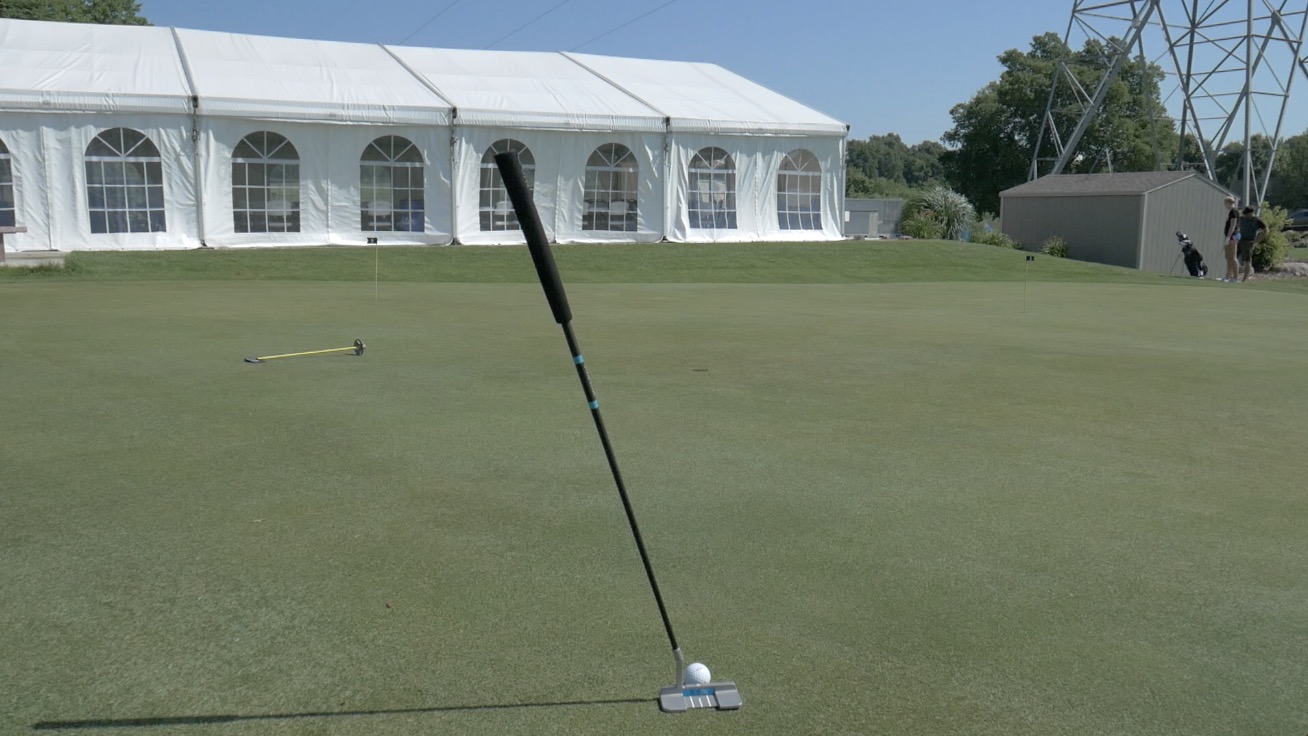
It’s a solution for golfers who want an easier way to aim putts.
Then again, sometimes it’s just about putter setup and ball position.
Former MLB pitcher (and Baseball Hall of Famer) John Smoltz raised the eyebrows of “golf Twitter” back in January when he was seen on the Golf Channel with his Bloodline putter — a stand up putter that has the same effective feature. (More on that below in our S7K vs. Bloodline section).
No hands, no problem 😎
John Smoltz and his stand-up putter lead the celebrity field once again
Watch now on NBC! #DiamondLPGA pic.twitter.com/TYP2S20BkW
— LPGA (@LPGA) January 18, 2020
This has stirred up a wide range of curiosity, intrigue, and controversy about the legality and consequences of a putter that stands alone.
Now, Mr. Smoltz is not a long-time Tour player, but he does have a USGA handicap card with a shiny +1.5 index.
Plus handicaps using this style of putter brings an element of validity to the concept.
Built by the same folks who brought you the A14 Autopilot driver, there is merit to the theory this putter stands on.
Let’s dive into the S7K putter!
S7K Standalone Putter Overview
How is this golf club able to stand on its own?
Well, let’s start with all of the specs of the putter:
- Length: 34.5”
A standard length for a putter.
- Loft: 3.0˚
A pretty standard loft for a putter (perhaps slightly on the low end, but compensates for hand position).
- Lie: 72˚
This is a standard lie angle, perhaps on the flat end of standard.
- Moment of Inertia (MOI): 7,000 g/cm2
This is going to get really “science-y,” but simply put, the higher the better. In fact, there are rumors that Cure Putters is building a putter that will boast an MOI of 18,000.
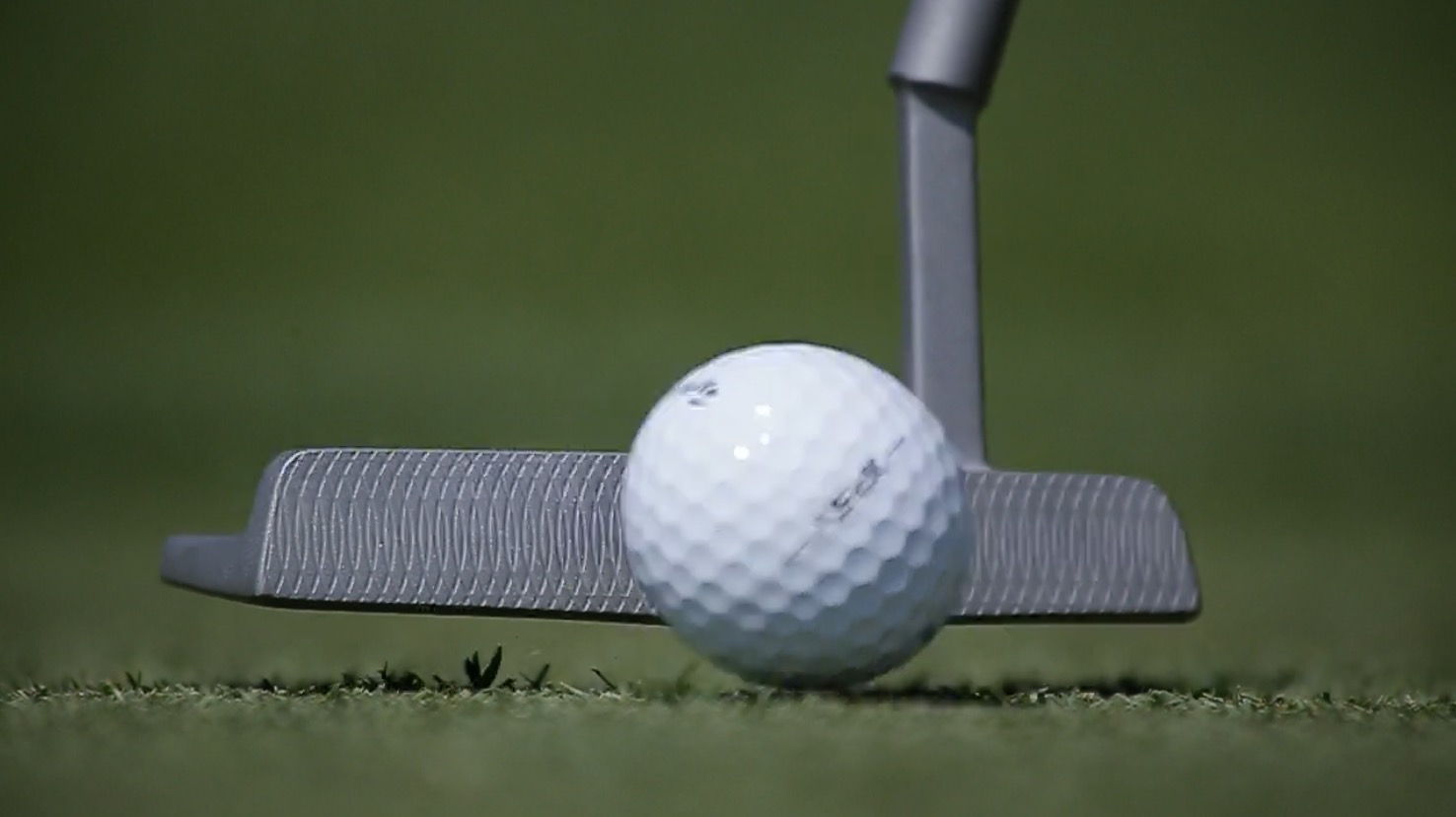
Most of the standard putters on the market have MOI from 4,000 – 6,000. Often times, higher MOI means more stability.
S7K Putter Components
- Grip: Midsize, EVA foam
It did feel slightly larger than a standard grip, which I liked. Thicker grip tends to help amateurs handle the club better, especially those with lots of putting stroke inconsistency.
[Definition time: EVA = Ethylene-Vinyl Acetate: a closed cell foam. EVA foam is often used in floor and exercise mats and sports equipment]
- Total Weight: 400g
Most standard putter heads will weigh between 300 – 400g, but this is a very nuanced question.
Given the shape of the S7K putter head, this is a fairly heavy head. It’s needed to allow the putter to stand upright.
- Shaft + grip weight: 50g
There isn’t a putter on the market where the grip and entire shaft represents less than 15% of the putter weight (11.1%). This is the secret sauce to the S7K.
- Head Material: 431 stainless steel
If you’re a stainless steel need, feel free to learn more about 431 stainless steel. This is a personalized question for each putter, so go with whatever feel is best for you.
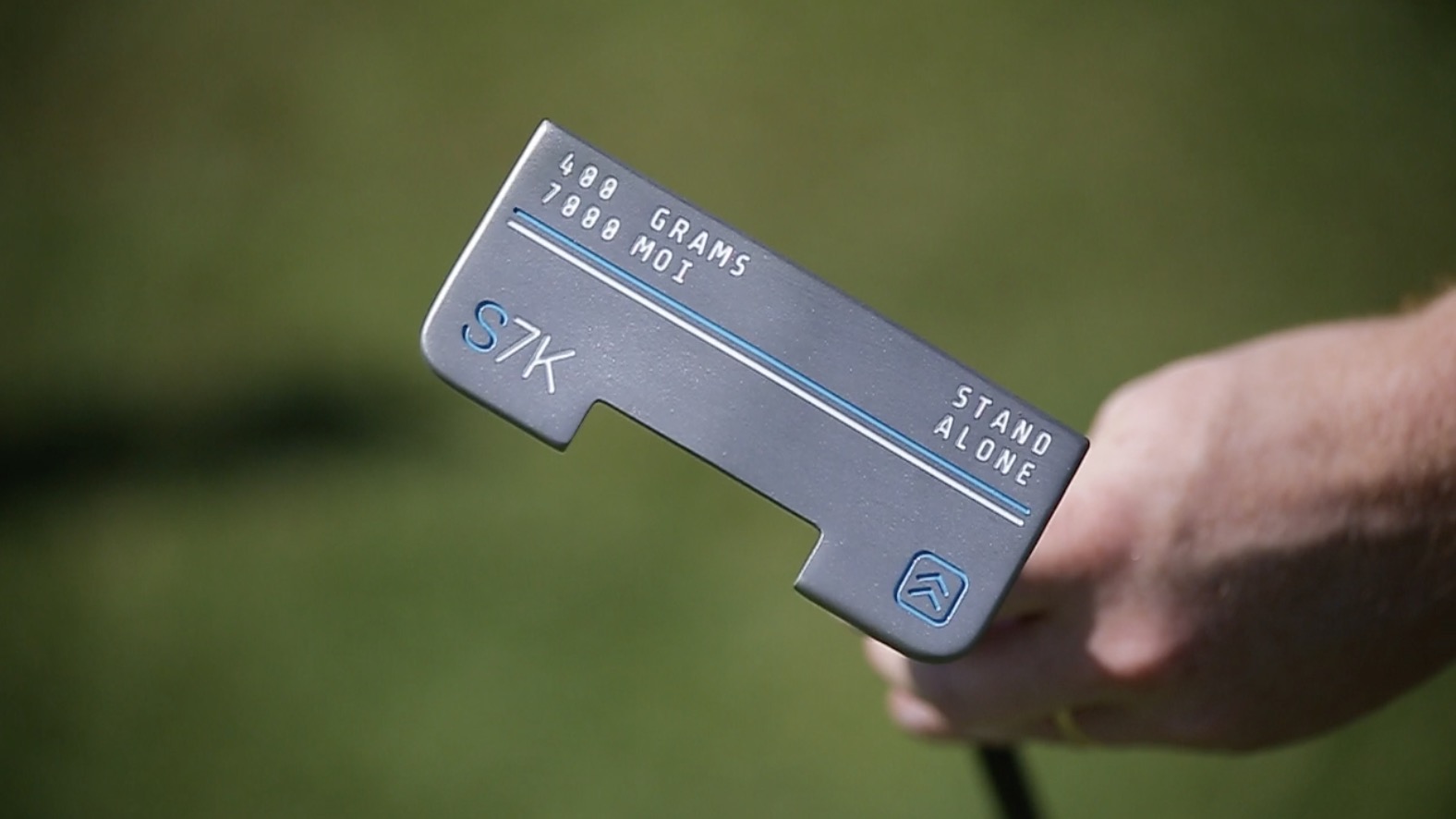
- Shaft: Graphite
And an extremely light graphite shaft, at that.
- Balance: 40° “toe hang”
Toe hang is measured by the way that the putter hangs given the shaft’s location to the putter head and the weight dispersion of said putter head.
This number seems about right, as the toe of the putter needs a lot of weight to allow the putter to stand.
And now that the specs are dialed in, let’s explore price.
Their sales page boasts that many of your buddies may believe this is a putter with a retail price of $250.00. They are quick to correct you with their slick marketing copywriting that this putter is well below the median putter price.
You can find them here for $199.
Low, high, or otherwise, this putter retails at roughly the same price point as some of the premier putters in the industry.
How Does the S7K Compare to Traditional Putters?
Obviously, the elephant in the room is the unique stand alone feature. That’s the main differentiator.
With the range of putters in the world today, I have a hard time deciphering what “traditional” even means. Truth be told, the putter head felt quite traditional in both material and shape. They didn’t seem to cut corners with low quality building materials.
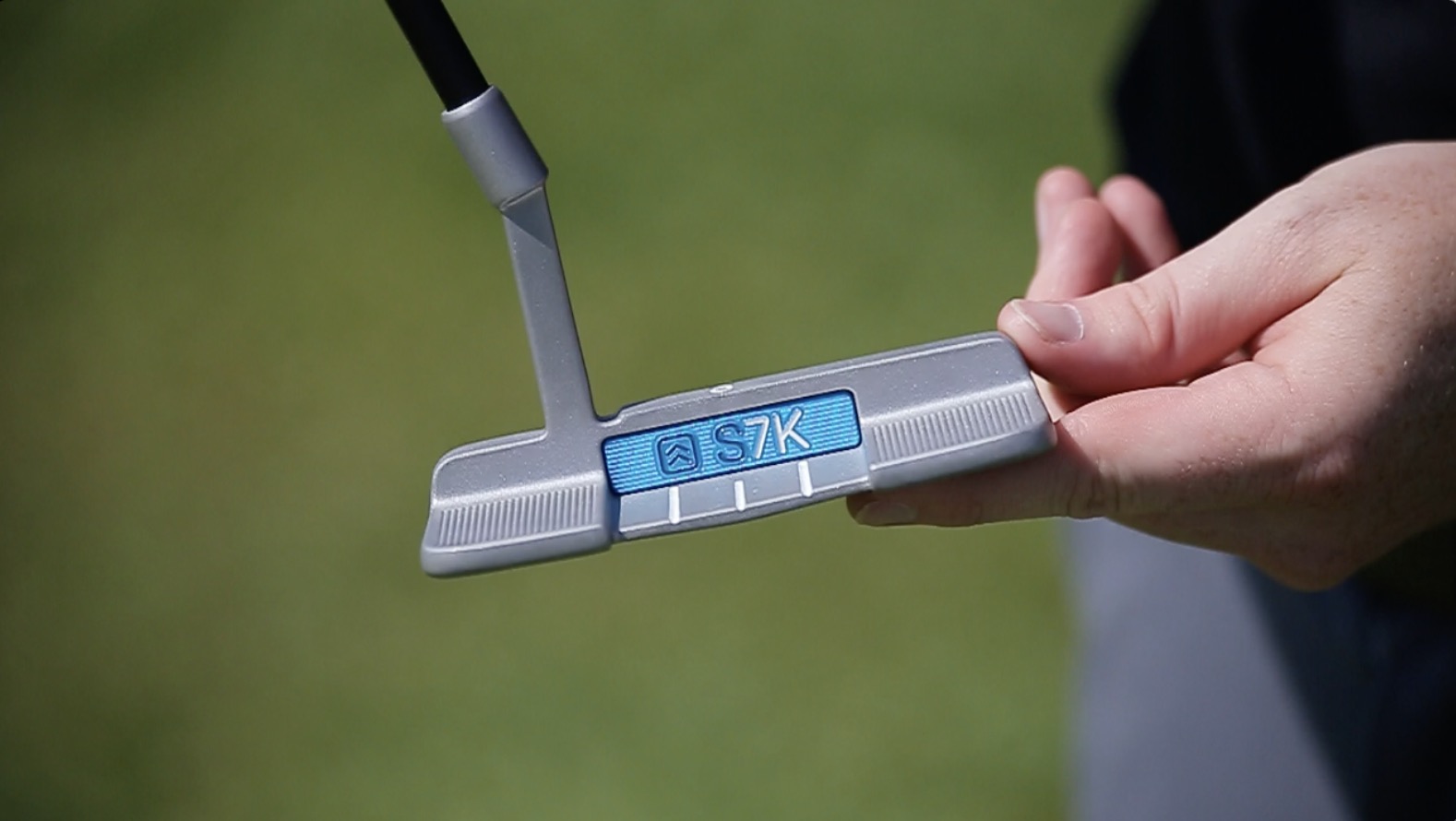
I’m actually going to question the validity of this question — truthfully, what is traditional?
Putters come in all shapes and sizes.
The putter has a heavy head, a gravity-less grip, a hollow shaft and it stands alone. Let’s keep this review moving!
The Claim of the S7K Stand Alone Putter
The main claim on the website is: “With the S7K Putter, you can place the blade behind the ball and line it up precisely while looking directly down the line.”
There really are no other claims or promises behind the putter.
A question that commonly follows the claim above relates to conditions. Does this putter stand in rain, wind, and on slopes? Their website says: yes.
Our testing?
Well, we tested it on some severely sloping South Dakota greens and surely, the putter stood. See?
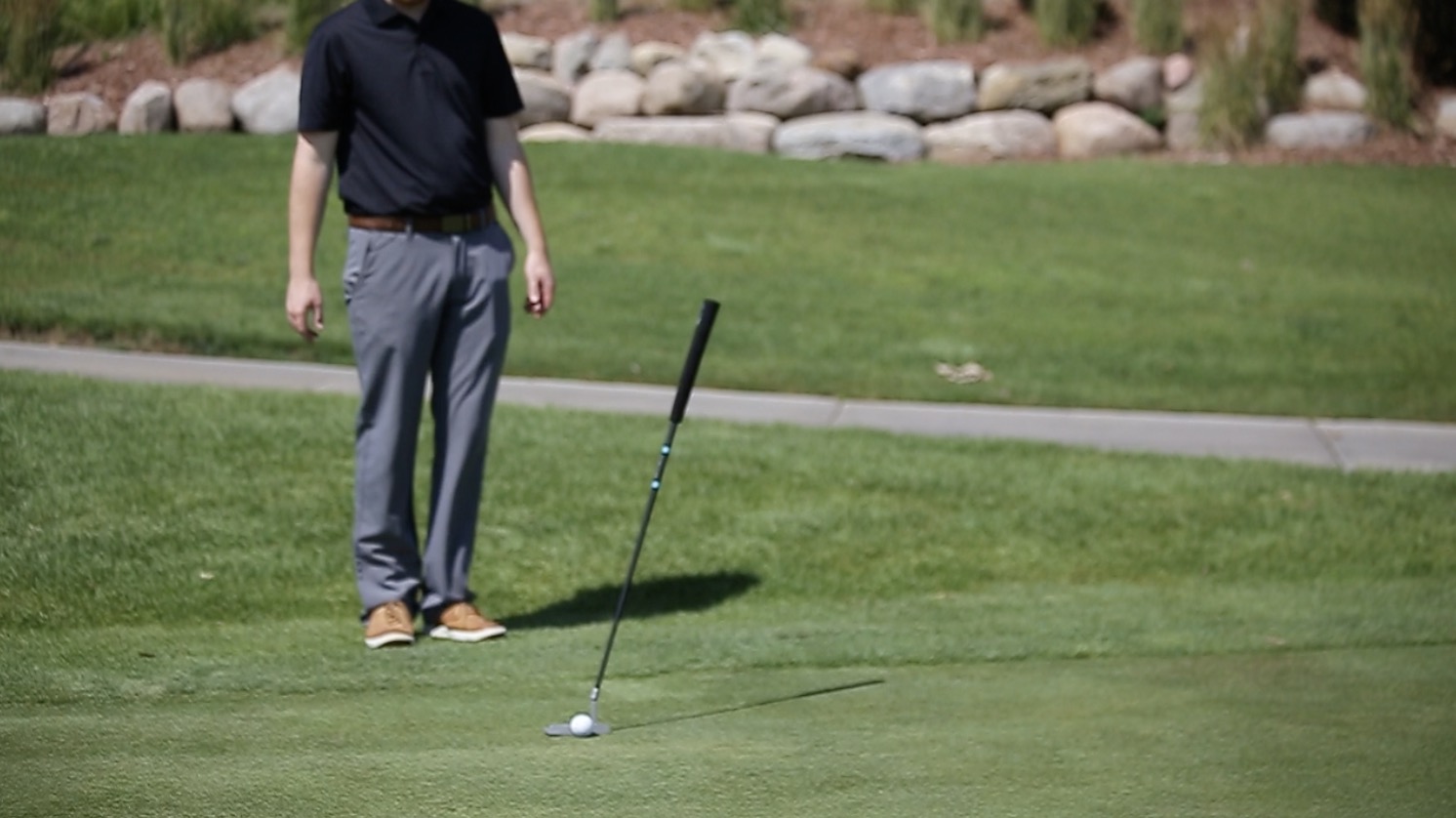
You’ll see other statistics on their website like, “on putts inside 10 feet, fewer than 10% of golfers consistently line up correctly.”
They really place emphasis on the aim and I’ll agree.
But that’s for the Verdict section below.
Alignment
Without solving a golfer’s alignment, this putter would be relegated to the donation bin.
It’s sole value — in my humble opinion — is that ability to aim the putter in an innovative way. The the provides may be its biggest asset.
In particular, I think the value of this putter is accentuated the closer a golfer gets to the hole. For long putts, the majority of the great lag putters in the game rely upon their imagination and the ability to feel a line. I’m really not sure average golfers aiming 50-footers are going to improve their SG-Putting statistics. In fact, in may inhibit their ability to lag the ball close.
Inversely, short putts are missed by poor alignment.
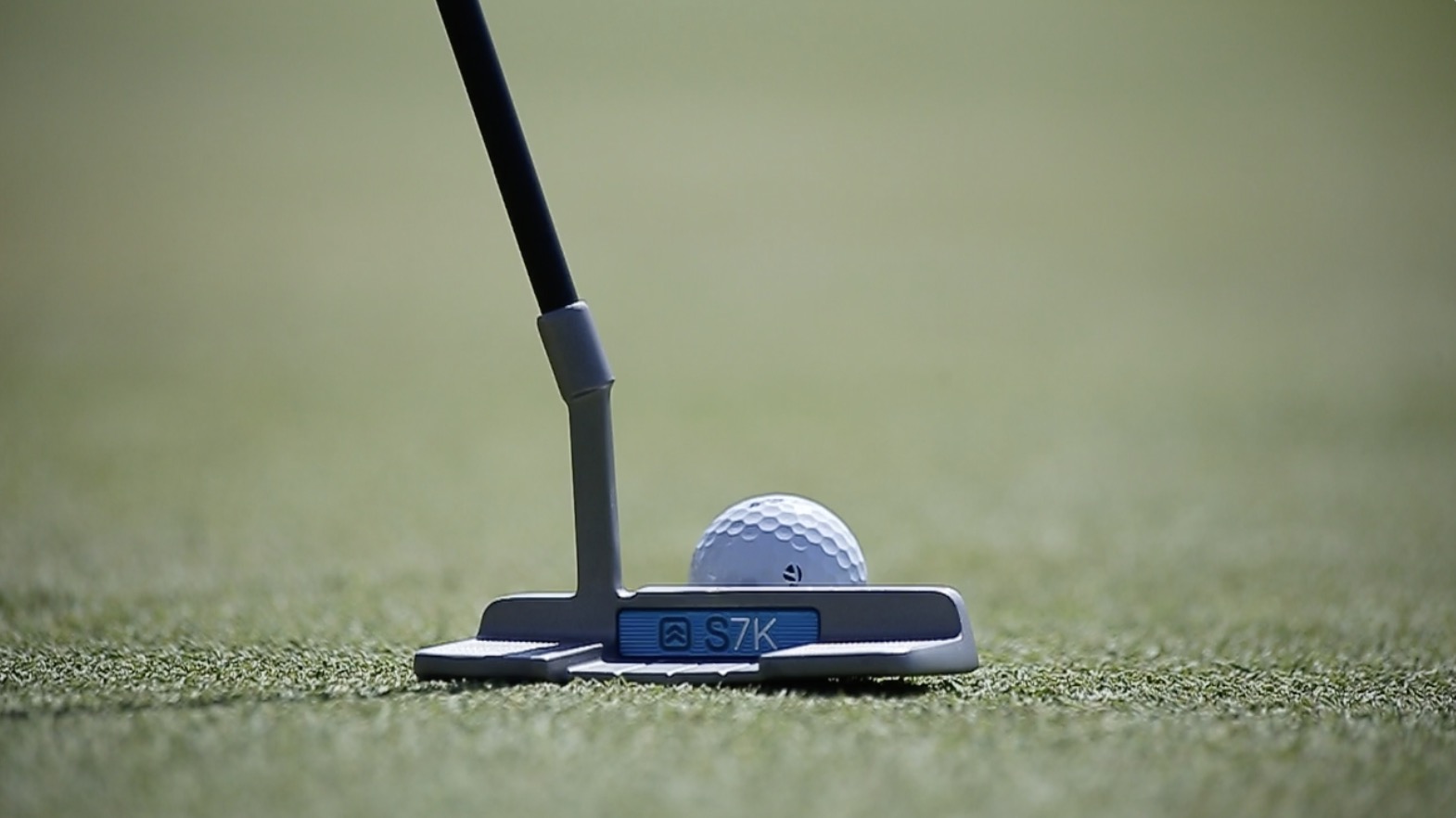
Sure, golfers obtain the dreaded yips, have innate flaws in their strokes, or just have no ability to read greens, but poor aim on a short putt is the dagger that makes every other element irrelevant. To eliminate variables, making sure a 6-foot putt is aimed correctly will allow you to focus on the other elements to the putt, the stroke, the read, and the roll.
That said, don’t purchase this putter with expectation to do anything other than what it’s designed to do: help you align your putts better. If you have a poor stroke, the yips, or cannot read putts, this putter isn’t the cure.
Milled vs. Insert
The S7K putter face is a milled face. When comparing putters with a face insert vs. putters with milled faces, it’s a point of preference. Some golfers prefer inserts, others prefer milled.
Immediately as I think of insert putters, I think of Odyssey putters I grew up using. The Odyssey Two-Ball, Rossie, etc. putters came with inserts to provide golfers with a different sense of feel through impact.
Inserts were developed to give golfers a deeper, quieter sound through impact, that of a smooth strike at impact. However, many golfers looking to improve don’t like the ambiguity of striking a putt. They want the feedback. Did I hit it off the toe or heel? Inserts make that difficult.
Milled putter heads are the putters for feedback. They are carved out of the steel itself, created by a complex milling process.
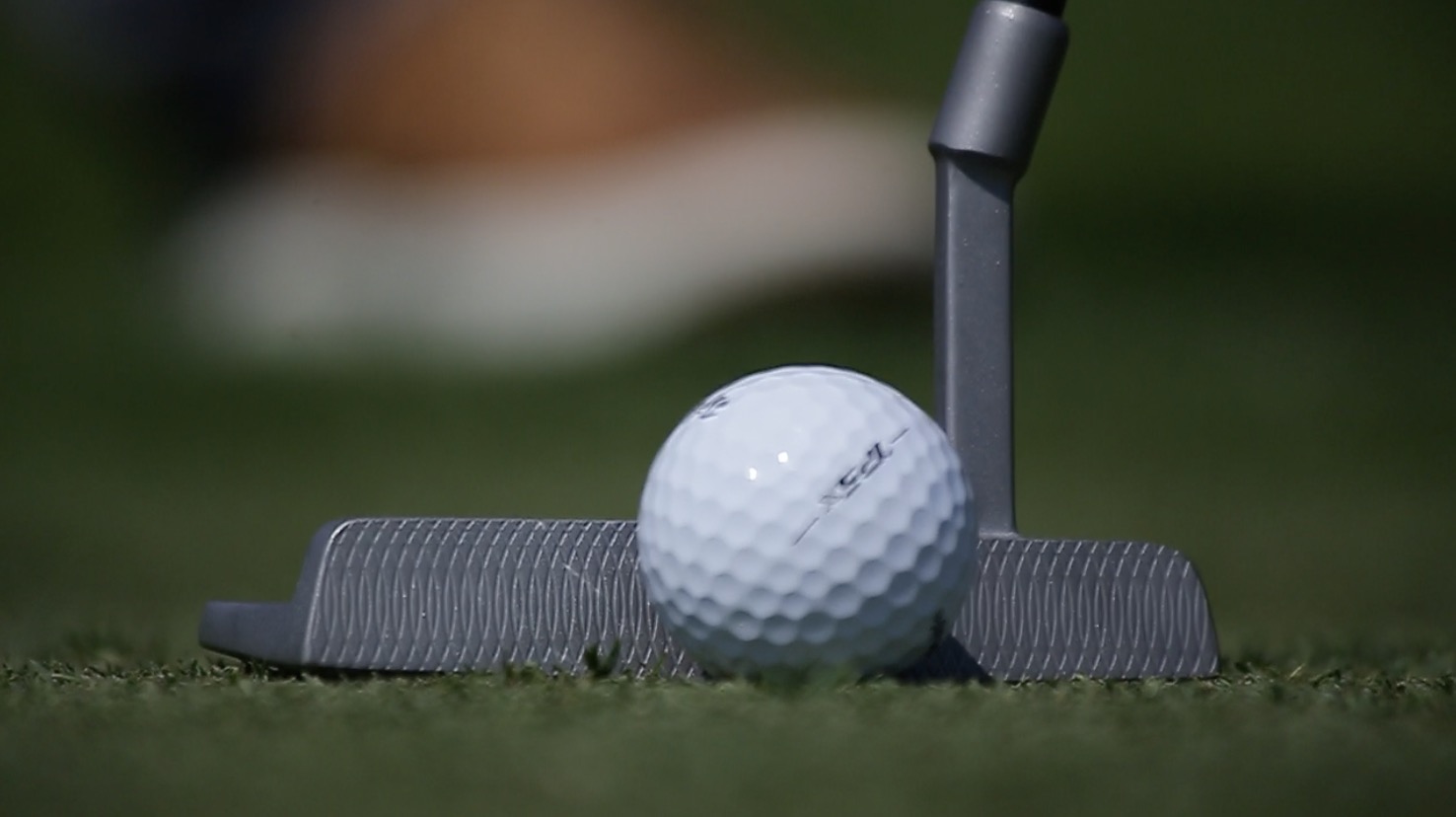
Players who use milled putters get a higher pitched sound and they receive feedback from the feel of the strike. Distance control is no different, milled vs. insert, but it’s important to understand your preference when making a purchase decision.
Again, the S7K Stand Alone putter is milled. I suspect this will fit the preferences of many golfers.
Putter Comparison: S7K vs Bloodline
We alluded to this above with our John Smoltz reference.
The Bloodline putter (which is apparently used by Ernie Els?) effectively does the same thing as the S7K.
Both putters stand on their own without aid.
Key differentiators:
- The Bloodline features a mallet head, a blade, a center shaft, and components.
- The S7K features a singular blade head offering.
- Both putters offer left-handed offerings.
- The S7K is priced at $179.
- The Bloodline is priced starting at $499.
- The Bloodline is red.
- The S7K is blue.
I did some light digging and was unable to find specific information as to which putter hit the market first.
Of course, our video review on USGolfTV last summer was done in response to Golf Channel ads our team viewed. We assumed the putter was launched not too soon before our seeing of this ad campaign.
However, on the Bloodline website, founders Brad Adams and Larry Bischmann have been working on this project for over three (3) years.
Perhaps Bloodline was first, but it’s hard to say.
At the end of the day, Bloodline appears to have the premium product based on R&D, messaging, and price point.
We did not test the two against one another.
Learn more about the specifics behind the Bloodline here.
[COMMENT BELOW if you’d like to see a full S7K vs. Bloodline review!]
Is the S7K Putter Legal?
This is a common question surrounding putters like this that hit the market.
Am I going to get dinged for a penalty by taking the S7K putter into competitive play?
The answer: No, you will not.
This putter is USGA and R&A legal (the ones who formally regulate the ).
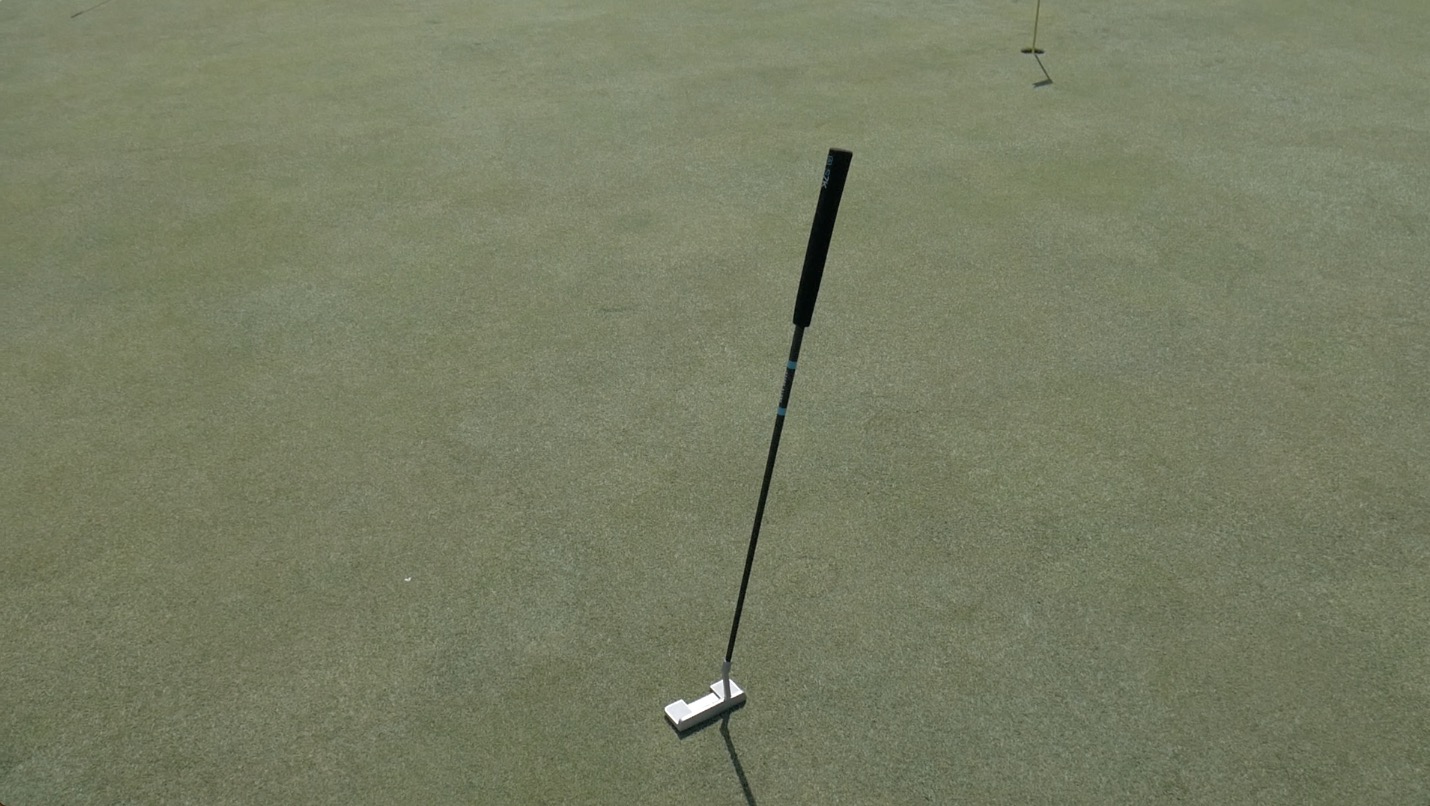
According to the USGA (and say what you want about the organization itself), “self-standing putters are allowed to be used” during competitive play.
Now this raises another personal question as follow-up: how is this different than alignment aides (illegal, under USGA Rule 8-2) during a stroke.
That’s a good question, but the answer lies in where the putter lies. If it sits next to the ball, it is legal.
Bullet dodged by the S7K.
Other Concern
There are other concerns with this putter other than the legality.
Few online have griped that a putter like this is going to further accentuate the pace of play problem we’re already having in the game.
One tweet: “you really think letting guys line up their putters all day is going to speed up play??”
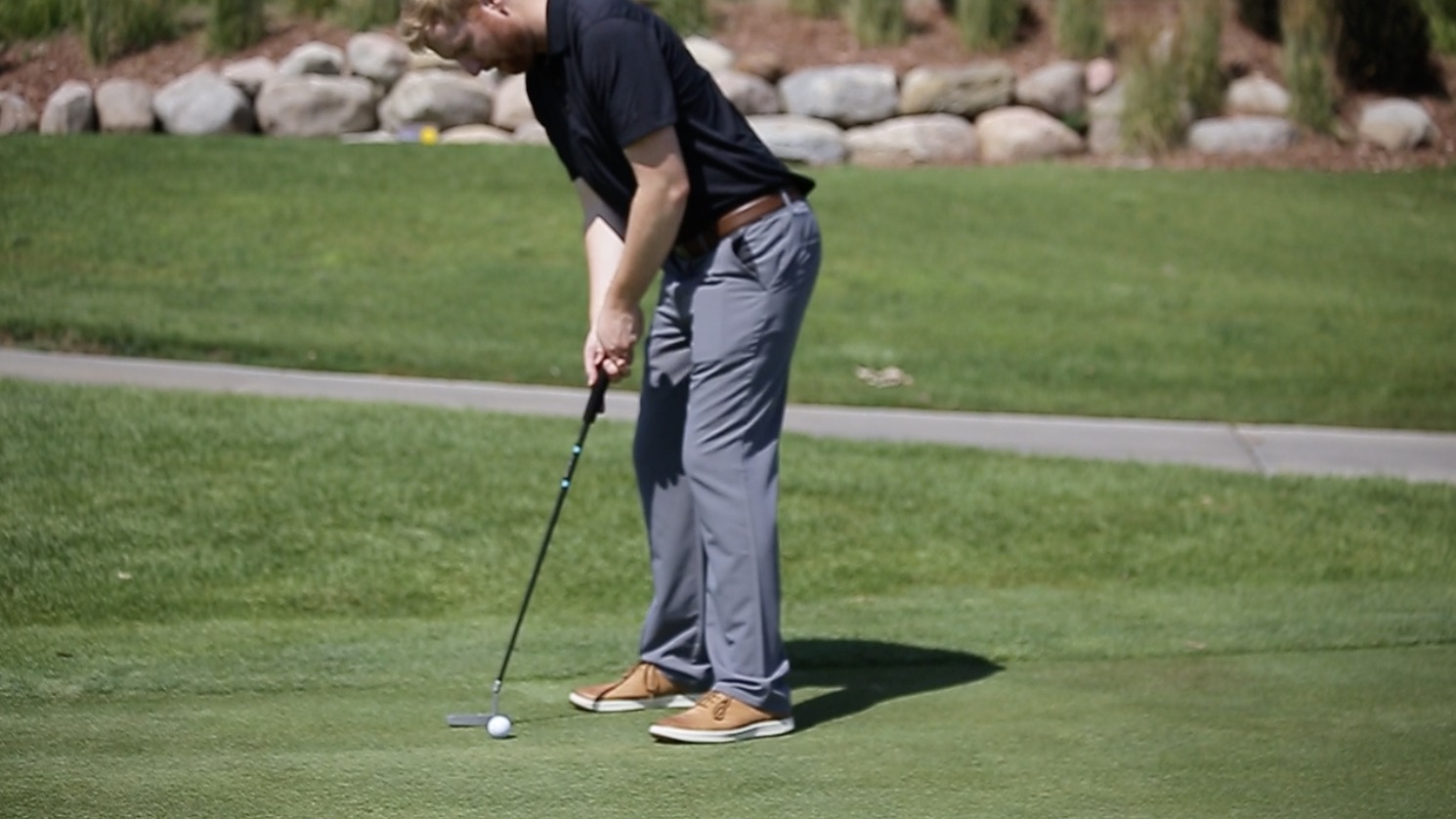
While I understand the concern, I don’t view this being a problem, by and large. The same player who is going to doddle lining up his S7K Stand Alone is going to be the one fidgeting endlessly with his traditional putter.
Slow players play slow. Now, that is not about to change, especially in your weekend foursome (though hopefully this will speed up the professionals).
I don’t see the S7K further escalating that issue.
READ ALSO: 4 FOOLPROOF PUTTING DRILLS THAT GUARANTEE RESULTS
Another Concern
Something I didn’t think about when producing this video, was the idea of wind. It’s odd — I should have.
I play the majority of my golf in the Midwest (South Dakota, to be specific), and the wind howls out here on the Great Plains. In fact, I played in an event this spring where the wind was pumping with gusts of 40-50 MPH. Do you know what wouldn’t have worked in that event?
A Stand Alone putter.
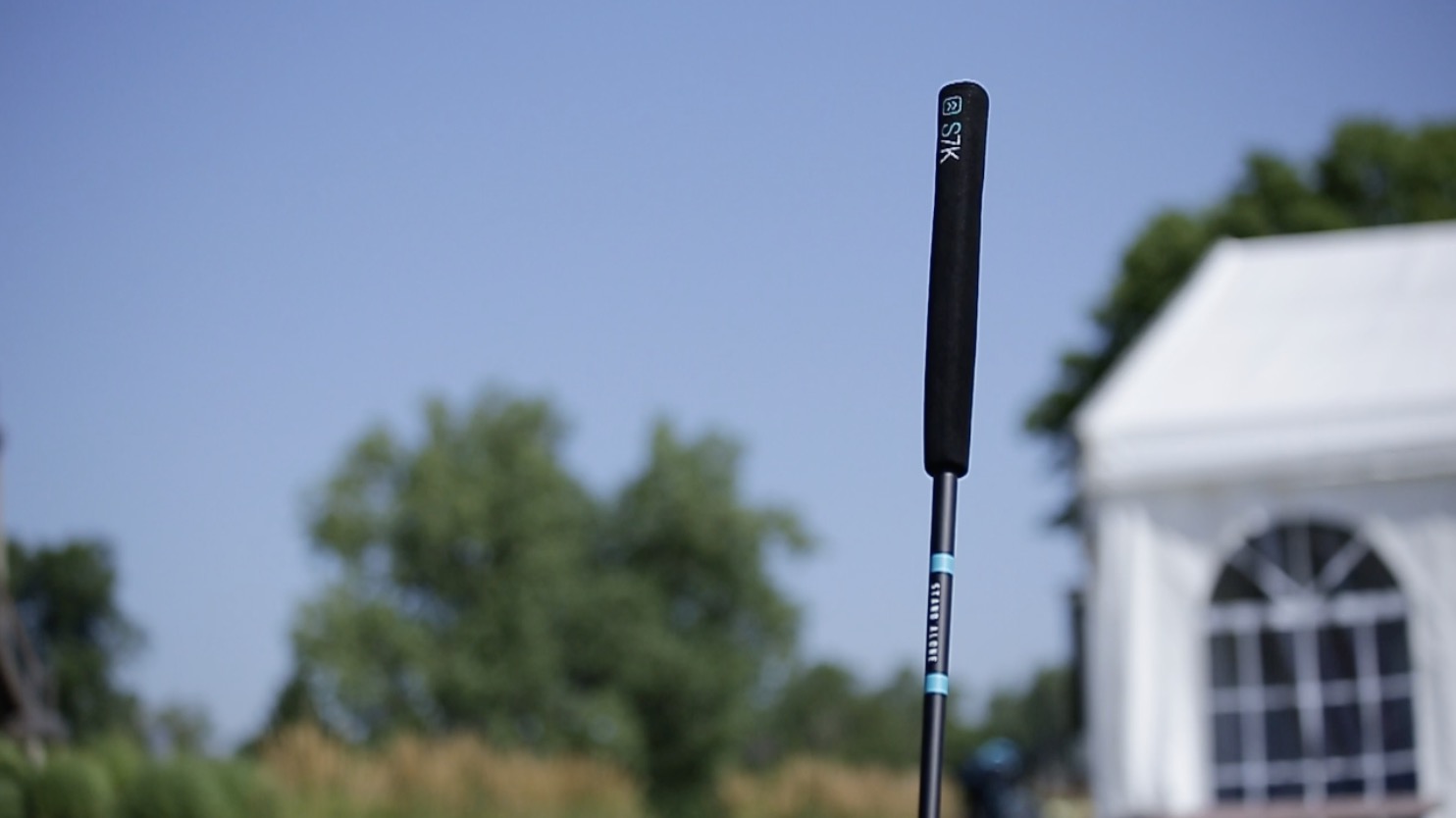
Honestly, I wouldn’t have even been able to get the putter to stand at all. It would have been rendered utterly useless.
So when the main benefit of putting this putter in play — the stand alone aim feature — has been taken away, you’re left with a foam grip putter and a heavy head as the wind whips over your shoulders.
Not exactly ideal.
Now, something to consider on this point is the question — what happens if the wind blows my putter over and it comes in contact with my golf ball? You’ll be relieved to know that under Rule 13.1d(1), if you do accidentally come in contact with your ball, you simply replace the golf ball and proceed with play.
13.1d(1)/1 – No Penalty for Accidental Movement of Ball or Ball-Marker on Putting Green
Under Rule 13.1d(1) examples of actions that are accidental
include when:
- The player takes normal actions near the ball before attempting a stroke, such as practice swings near the ball or addressing the ball by placing the putter on the ground near the ball.
- The player drops a coin or a club, hitting the ball and causing it to move.
- The partner or opponent of the player, or one of their caddies, unintentionally moves the ball or ball-marker, such as by kicking the ball, dropping something on the ball, or by pressing down the ball-marker.
- The player inadvertently steps on the ball-marker and it sticks to the bottom of his or her shoe.
In these examples of accidental movement, the ball or ball-marker must be replaced and there is no penalty to anyone. If the exact spot from where the ball or ball-
marker was moved is not known, it must be estimated (Rule 14.2c).
So while the putter will have been rendered useless anyways, you won’t be penalized by its clumsiness.
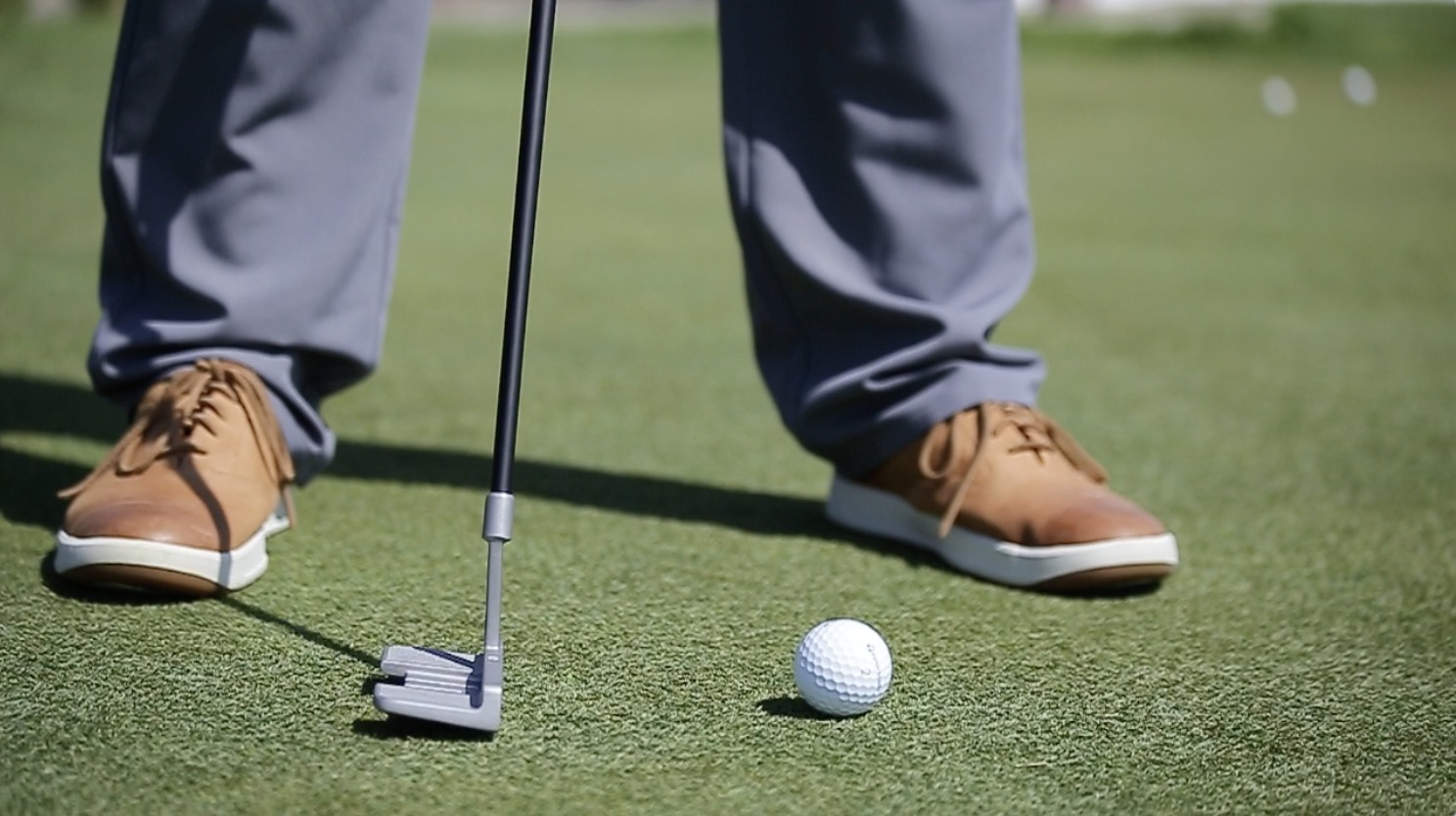
Verdict on the S7K Stand Alone Putter
The S7K Stand Alone putter was designed to achieve a singular objective — help golfers who can’t aim on the greens.
So to do this, they were forced to ignore every other element about a putter. Having the putter “stand alone” without aid was paramount during research and development.
Not only did the putter need to stand, but it needed to stand with perfect alignment to the target line.
This meant that the shaft needed to be manipulated, the weight of the putter head needed to be curtailed (despite what is best for your stroke), and the physics of the putter needed to achieve the main goal: have the putter stand alone.
Another thing I noticed was that in order for the putter to stand on its own, it would consistently create the same hand position.
When I used it, I felt a bit like Zach Johnson, as my hands were preset either even with the ball or slightly behind it.
Good, bad, or otherwise, I typically putt with a slight forward shaft lean, so that was an adjustment.
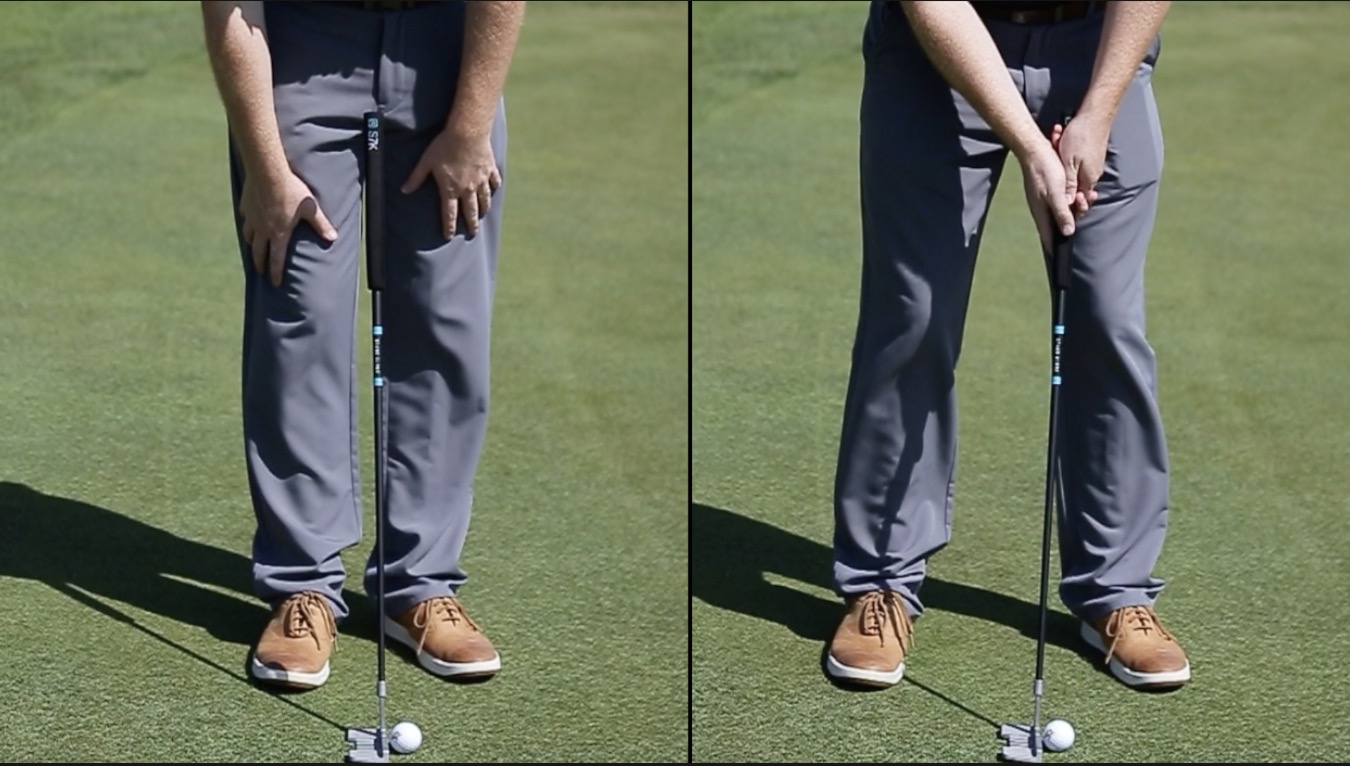
Gimmick or Real Deal?
I’m not going to use the word “gimmick,” because I do there’s a method to the madness here. However, there are many elements that go into a proper putter. This group was forced to sacrifice many of them in pursuit of a putter that “pulled off their trick” of standing upright.
My belief in putting: all a golfer can do is hit a good putt. For the 99% of golfers, aiming the putter is not a physical limitation, it’s a mental one.
The great putters in the game find ways with their mental approach to be consistent with their aim.
So while you may not see the pros on the PGA Tour using this anytime soon, that does not mean it is free of any merit.
If you’re desperate to aim on putts inside 10-15 feet and have found no other solution, this putter could help.
If you don’t have time to perfect alignment, this putter could help.
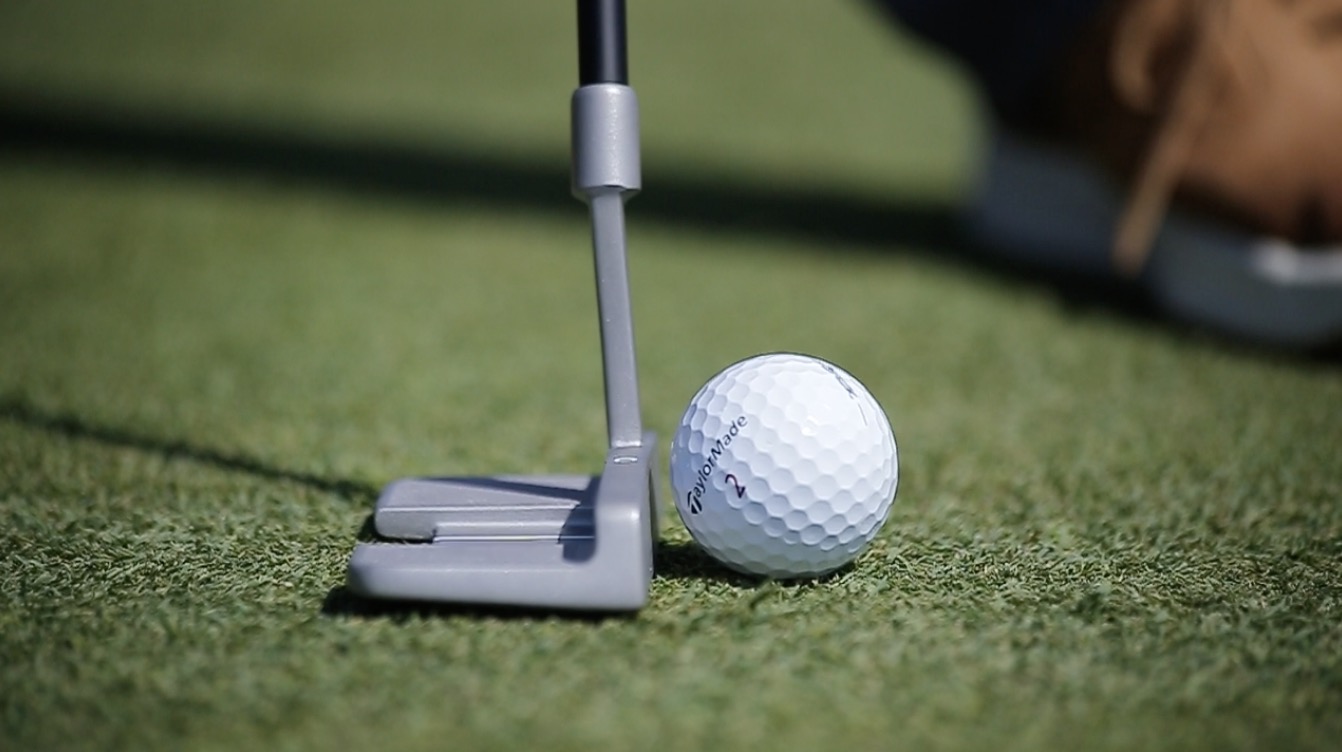
Ultimately, while this putter would not go in my bag, I do believe there could be benefits for certain golfers.
Also, putting is a deeply personal part of the game.
I’m all for anything that makes a player putt better — so long as I’m not playing them in an afternoon nassau.
Good luck!
You can follow Troy Klongerbo on Twitter here


Kelsey Solan Coordinator, Rules Engagement
I find your answer unsatisfactory in the interpretation of Rules 10 2b (2) and 10 2b (3).
Since you made no attempt to explain why my questions about the interpretation of the rules were incorrect I am asking for a complete evaluation concerning the methodology advertised by the manufacturer in the use of this putter.
Lets talk about putting: Currently there are five basic steps, and they are all done while holding the putter in one or both hands:
1. The first is the survey of the green and the position of the hole.This survey provides our brain with the slope of the green and the condition of the grass.
2. The aim of the ball is established looking through the ball to the hole and taking into account the slope (uphill, downhill and sidehill) allowing for the affect that gravity will have on the direction and speed of the ball. This establishes the line of play from the ball mark to the hole and the speed of the putt.
3.While standing to the side and over the ball we create an imaginary line that coincides with the line of play we visualized in the aiming process. .We then align the putter face behind the ball and at a 90 degree angle to that imaginary line of play and place our feet along that same line.
4. We finish taking our stance by aligning our shoulders and hips so that our execution of the putting stroke will bring the face of the putter back to the ball at the 90 degree angle to our visualized line of play.
5.We then execute the stroke.
This action requires concentration and repeated practice in order to get all the elements correct. Without practice sighting across the marker or the ball to the hole is not a fail proof process and the golfer often fails in determining correct line for the putt. Gripping the club and taking a stance, then positioning the putter head at a right angle to the chosen imaginary line is not an easy process, and if any of the three are incorrect the putter head will not be in the correct right’ angle position when it strikes the ball. An error of 2% will cause the golfer to be unable to make a five foot putt. .
Under your interpretation of the two rules steps number one and five are the only two of the five basic steps that now apply.
1. The aiming of the ball is now done with an object (albeit a putter) showing the line of play. The golfer only has to make certain that the putter is square to the line of play that is chosen, and he does this from a position directly in line with the line of play.. Far different from sighting across a ball mark or a ball, I am questioning the legality of this method because an object is used. 10 2 b. When the putter leaves physical control by the golfer it becomes no more than an object.
2. The next step is taking a stance to the side of the stand-alone putter and griping it without disturbing the alignment of the face. The object, putter, facilitates taking of the stance.. You don’t take your stance by lining up to the ball or the line of play, you line up to the putter. I question the legality of this action, 10 2 c
3. Execute the stroke.
Putting involves three basic steps, planning, aiming, and executing. The golfer stands beside the ball and over it rather than kneeling or laying on the ground behind it, which would be more efficient .Gofers must create an imaginary line of play that begins by bisecting the ball and ends in the hole. With that line created the golfer positions the putter face at a right angle to that line.. In this procedure there is not much in the way of a visual cue or reference as to whether we are correctly aimed or aligned. This is putting and this takes skill. This is what you are eliminating from the game.
I find your answer unsatisfactory in the interpretation of Rules 10 2b (2) and 10 2b (3).
This is what you said:
We received your voicemail and I just wanted to reach out with the answer to your question about the stand-alone putters. Provided the club conforms to the Equipment Rules, use of a stand-alone putter is not a breach of the Rules of Golf when it is used in the following way:
The putter is set down in a standing position right behind or right next to the spot on which the ball came to rest on the putting green to allow the player to leave it there to show the line of play (Rule 10.2b(2)) or so that it can help in taking a stance (Rule 10.2b(3)).
I have sent you three previous emails explaining my objection to the methodology advertised for the use of this putter. Let me explain:
1. The putter conforms to the Equipment Rules. This is not a problem.
2. The methodology used in their advertisements does not conform to the rules: As explained in their methodology the stand alone putter has three purposes: 1. as a sighting object or device to show or determine the line of play . 2. after establishing the line of play it is left in position to help in taking the stance. c. to stroke the ball
“Rule 10 2b (2) The player or caddie must not set an object down anywhere on or off the putting green to show the line of play. This is not allowed even if that object is removed before the stroke is made.”
Your ruling states that contrary to the intent of this rule the player can “set an object down” on the green and is allowed to “leave it there to show the line of play (Rule 10.2b(2)” By setting down the putter on the green and leaving it stand there the golfer changes the purpose of the putter. The line of play has not yet been established and it is the players intent to use the putter as an object to establish the line of play. It is my understanding of this rule prohibits the player from setting down “any object’ to show the line of play. It does not say that the putter is not such an object.
The golfer can set the putter down on the green but remain in physical control of the putter, then and use it in aligning the stroke of the ball along the line of play chosen by the golfer. This procedure has always been the standard practice.
You say that the putter can be set down in a standing position and the player is allowed to leave it there to establish and to show the line of play. You realize in this methodology when the player sets the club down the line of play has not yet been established. After setting down the putter the player takes a position on the green away the from the “putter ” and observes the potential line from a distance using the putter head as an aid “to show the line of play.” The golfer then adjusts the putter to his/her selected line and may do this more than one time, before taking his/her stance. This is a distinct advantage that has not been available before, and you say this is allowed. I say this is a violation of the rules
Reasoning: If the golfer relinquishes control of the putter it no longer is a putter and falls in with the definition of an “object” set down on the green not in preparation to putt, but “to show the line of play.” Your statement “allow the player to leave it there to show the line of play” is contrary to the intent of rule 10 2b (2). The makers of this putter have decided this is legal because the object used to sight in the line of play is a putter and rule states an object. The noun in this case, “object” is inclusive not exclusive. Your interpretation of the rule effectively sides with the manufacturer exempting the stand-alone putter from being an object. This is wrong.
Your ruling also states ” so that it can help in taking a stance.” This is not allowed.
USGA Rule 10 2b (3) states: No Setting Down Object to Help in Taking Stance. A player must not take a stance for the stroke using any object that was set down by or for the player to help in lining up his or her feet or body, such as a club set down on the ground to show the line of play.
By the rules using the pre-positioned object (putter) which is now standing alone on the putting surface to “help in taking a stance” is clearly illegal.
Your interpretation that this can be done is directly in violation to 10 2b (3) which specifically states “….such as a club set down on the ground to show the line of play.”
Golf is a difficult game and it is played by people who have practiced for years to develop their skills. Not the least of which is Putting, a skill that is exhibited on every hole and in general allowed two strokes because of its difficulty. You are the guardians of this sport and it is unbecoming to your responsibility for you to allow the simple technology of building a putter that can stand up to change the challenge that golf, and in particular putting represents. Stick to the rules.
Bob Mullen, USGTF Master Teacher
Bob, thank you for taking the time to comment on our article. However, we are not affiliated with the S7K putter, nor do we endorse the product. This article is intended as a review of the product itself, nothing more. The calls and emails you would have made would not have been directed to us. We apologize for any confusion in the matter.
If you play on flat greens and there is zero wind then the putter is good but if your greens have much of a contour and there is 4 to 5 mph wind , forget it……..it is worthless at my club. Wished someone would have told me this before I bought it. Brand New, putter head still wrapped. $150.00